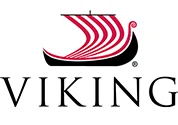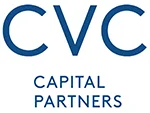 |
| Doug Donsky |
Society’s move away from privacy toward conversation and engagement is a unique challenge for private equity. While general partners are accustomed to confidentiality and letting the “results do the talking,” the landscape is changing. Institutional investors and advisers are insisting on greater transparency, disclosure and limited partner communications for their private holdings—because this is what they already receive from their public company investments.
Along with this shift in investor and public sentiment, there’s growing recognition today among GPs that their private portfolio companies define their public firm image. It’s this mirror on reputation that has caught some off guard when portfolio issues arise. Media scrutiny of portfolio companies has led fund managers to postpone exits, realize lower returns or delay the launch of new funds. As a result, GPs are realizing that the external perception of each individual business can affect the value of their investment and, ultimately, the returns achieved for investors.
With private equity squarely in the public eye, fund sponsors are expanding their traditional PR and IR focus from M&A and fundraising to include a broader range of communications and capital markets activities for their portfolio holdings.
Media, PR and crisis preparedness
For years, private equity sponsors have leveraged media relations to raise awareness of their investment activities, typically to build deal flow or expand investor interest before fundraising. More recently, however, GPs have added PR support for their portfolio companies, with media efforts geared toward increasing customer sales, strengthening recruitment or creating a more sympathetic community profile. Private company CEOs, supported by their owners, also realize they need to more publicly tell their corporate story early in order to attract additional private capital funding, develop strategic partnership opportunities or drive market interest for a potential sale or IPO. Perception audits, executive collaborations with key industry figures—trade reporters, academics, think tanks, etc.—case studies and more public visibility are a few of the many strategies being used to build private company awareness and reputation.
| This article is featured in O'Dwyer's Aug. '21 Financial PR/IR & Professional Services PR Magazine (view PDF version) |
PR likewise remains a way to inoculate companies against criticism. Businesses that cater to consumers or have a high degree of reputational risk recognize the danger of inaction. Playing defense is no longer viable, as once a storyline takes hold, it can be very difficult to change. The time to educate is always before a crisis, not while it’s happening. By combining traditional media relations with social and digital strategies, private businesses can effectively mount a defense and broadcast their messages worldwide.
It’s inevitable that every company will face some form of criticism at some point. Headline risk is unsettling for GPs, as portfolio issues inevitably raise LP concerns. State pension funds, endowments and private family offices, in particular, are hypersensitive to their public image and the potential of guilt-through-association shaming. Against this backdrop, GPs are adopting best crisis practices into their private portfolio holdings, demanding each company have a well-defined, well-rehearsed playbook to anticipate crises and be prepared to respond quickly and proportionally.
Digital branding, websites and social engagement
It’s imperative for every business to have infrastructure in place to succeed in the digital era—to tell its story, make the right first impression, manage its customers’ expectations and defend its corporate reputation through digital, mobile and social experiences. A growing number of GPs are seeking ways for their companies to make a good first impression or expand customer engagement. That typically takes the form of investment in brand road mapping, website development and digital marketing. Other common requests include social media management/amplification, data visualization, presentation design and sales collateral.
Presentation and media training
With investors demanding more information around their private investments, many ask for dialogue with executives of portfolio companies. In response, GPs have begun to arrange quarterly conference calls to update their LPs and annual investor meetings to provide a platform for management to meet investors and discuss their businesses in depth. However, private company CEOs often have far fewer opportunities to present than public peers, while their sophisticated audience—the financial community—spends every waking moment in PowerPoint meetings, reviewing financial presentations and questioning management teams. This perceived mismatch between presenter and audience is a source of GP anxiety.
In response, CEOs are given presentation training and additional, specialized training tailored to format, helping to raise their profiles with media, podcasts and conferences. In a typical media training, the trainer will include a review of key messages; discuss audience and objectives as well as how to take tough questions and pivot to messages; and then engage in practice interviews for video playback critique.
Early-stage IR and capital markets advisory
Regardless of the expected exit path for a portfolio company, it’s always helpful to be on the radar in a given industry sector. Financial sponsors, therefore, have encouraged private companies to engage more directly with Wall Street early. Today, there are a growing number of opportunities for private companies to present to investors and analysts, as they look to understand the landscape of current and future investment opportunities or seek to build relationships and a pipeline of future transactions.
Capital markets advisors can help prepare private company management teams for discussions with investors, identifying and matching investment interest to a company’s strategy, industry and profile. Working alongside management, advisors bring an extensive network of relationships across numerous pools of capital and help structure transactions to address the current and long-term objectives of the company.
ESG for private companies
Private companies and their sponsors are facing increasing pressure to incorporate ESG from institutional investors and industry groups, particularly the United Nations Principles for Responsible Investment. In the past, simply being a UN PRI signatory provided adequate reputational protection; however, in 2018, PRI instituted minimum reporting requirements and in 2020, started delisting firms that did not meet them. While some larger PE firms have embedded ESG factors into their process, smaller firms are still playing catch up. In order to remain competitive, companies must draft ESG policies that align with their investment strategy, delegate ESG responsibility and oversight, and implement a formal ESG approach (with KPIs, sector guidance, training and reporting framework).
But most importantly, they must incorporate ESG due diligence into investment due diligence. Ensuring strong ESG disclosures at exit from investee companies can demonstrate resilience and attract valuation premium from ESG-focused investors. The exact steps depend on the firm, but may include screening, ESG due diligence, developing an action plan, reporting and ESG integration within the firm.
***
Doug Donsky is Managing Director of ICR.


 FGS Global represents private equity firm Thoma Bravo as it makes a $4.6B bid for Darktrace, a UK-based cybersecurity artificial intelligence firm.
FGS Global represents private equity firm Thoma Bravo as it makes a $4.6B bid for Darktrace, a UK-based cybersecurity artificial intelligence firm.
 Edelman handles Viking Holdings, the river and ocean luxury cruise line that plans to raise $1B via an IPO priced in the $21 to $25 per share range.
Edelman handles Viking Holdings, the river and ocean luxury cruise line that plans to raise $1B via an IPO priced in the $21 to $25 per share range. Teneo is handling the initial public offering of CVC Capital Partners, one of Europe’s largest private equity firms with nearly $200B in assets under management.
Teneo is handling the initial public offering of CVC Capital Partners, one of Europe’s largest private equity firms with nearly $200B in assets under management. Brunswick Group represents Endeavor Group Holdings as it agrees to go private via its acquisition by Silver Lake technology investment firm, which is handled by Edelman Smithfield.
Brunswick Group represents Endeavor Group Holdings as it agrees to go private via its acquisition by Silver Lake technology investment firm, which is handled by Edelman Smithfield.


 Have a comment? Send it to
Have a comment? Send it to 
No comments have been submitted for this story yet.